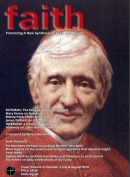The Institution of the Eucharist
Post-Synodal Aspostolic Exhortation Sacramentum Caritatis of
the Holy Father, Benedict XVI
10. This leads us to reflect on the institution of the Eucharist at the Last Supper. It took place within a ritual meal commemorating the foundational event of the people of Israel: their deliverance from slavery in Egypt. This ritual meal, which called for the sacrifice of lambs (cf. Ex 12:1-28, 43-51), was a remembrance of the past, but at the same time a prophetic remembrance, the proclamation of a deliverance yet to come. The people had come to realize that their earlier liberation was not definitive, for their history continued to be marked by slavery and sin. The remembrance of their ancient liberation thus expanded to the invocation and expectation of a yet more profound, radical, universal and definitive salvation. This is the context in which Jesus introduces the newness of hisgift. In the prayer of praise, the Berakah, he does not simply thank the Father for the great events of past history, but also for his own “exaltation.” In instituting the sacrament of the Eucharist, Jesus anticipates and makes present the sacrifice of the Cross and the victory of the resurrection. At the same time, he reveals that he himself is the true sacrificial lamb, destined in the Father’s plan from the foundation of the world, as we read in The First Letter of Peter (cf. 1:18-20). By placing his gift in this context, Jesus shows the salvific meaning of his death and resurrection, a mystery which renews history and the whole cosmos. The institution of the Eucharist demonstrates how Jesus’ death, for all its violence and absurdity, became in him a supreme act of love and mankind’sdefinitive deliverance from evil.

